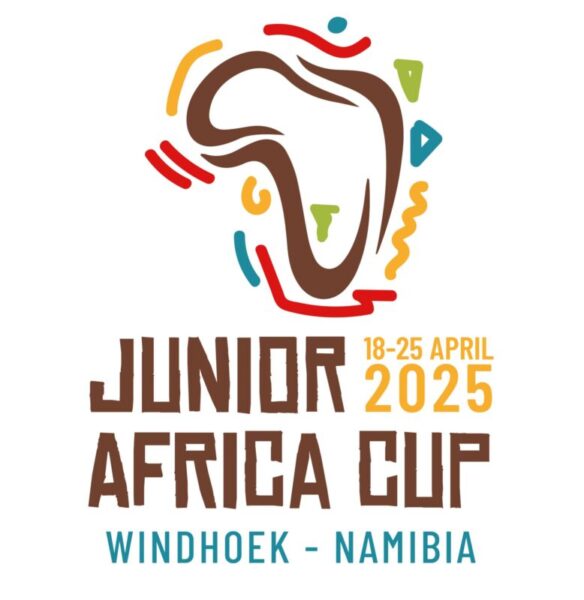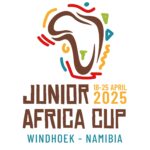Wed 23.04.25
With only two points and one match left against Zimbabwe, the Kenyan ladies will need a miracle and favourable results elsewhere to advance to the semis. As the 2024 Junior Africa Cup (JAC) in Windhoek, Namibia, enters its final stretch, Kenyan hockey fans have taken to social media and fan forums to share their passionate responses to the national U21 men’s and women’s teams’ performances.
 With both teams having played four matches each, the men’s side is still in the hunt for a spot in the semi-finals after a crucial 2-1 win over Zambia, while the women’s team faces an uphill task following two draws and two losses.
With both teams having played four matches each, the men’s side is still in the hunt for a spot in the semi-finals after a crucial 2-1 win over Zambia, while the women’s team faces an uphill task following two draws and two losses.
The Kenya U21 men started their campaign with a goalless draw against Zimbabwe, showing solid defensive organisation and resilience under pressure. In their second match, they managed a 4-4 draw against Egypt with signs of improved build-up play but lingering issues in game management and goal conversion.
They then lost 5-3 to Namibia in a thrilling encounter where goalkeeper Josephat Ondijo stood out with heroic saves despite a shaky defensive unit. The team finally bagged their first win by narrowly beating Zambia 2-1, keeping their hopes for World Cup qualification alive.
They currently sit fourth in the standings with five points and must deliver in their final group stage game to confidently secure a semi-final spot. The Kenya U21 women’s team drew 0-0 with Uganda in their opening match, struggled against Namibia, losing 2-0, and then fell 4-0 to South Africa in a match where defensive lapses were costly.
Their latest fixture against Zambia ended 1-1 after a late equaliser by the Zambians, denying Kenya a deserved win despite dominating large portions of the game.
With only two points and one match left against Zimbabwe, the Kenyan ladies will need a miracle and favourable results elsewhere to advance to the semis.
Fan Reactions: Highs, Lows, and Honest Truths
From general observations to deep tactical assessments, Kenyan fans have not held back in expressing their thoughts. Nobel Kirui highlighted Kenya’s strength in build-up play but pointed out a recurring problem in front of goal.
He noted the frequent use of aerial passes in areas where simpler options were available, leading to loss of possession. “We have the best build-up, but we don’t complete the dots when it comes to goal scoring,” he said.
Grace Onimbo supported this observation and emphasised the need for composure in front of goal. She advocated for targeted training drills that simulate one-on-one scenarios and pressure finishes to improve conversion rates.
Penalty corner execution came under heavy scrutiny. Fans observed that the men’s side often relied on drag flicks with no variation, making it predictable for opponents.
“We should have a better plan on penalty corners, not a fixed play,” said Kirui. Onimbo echoed this concern, stating that the women’s team had yet to convert from short corners and needed to explore more strategic setups.
Defensively, the teams were praised for individual duels, particularly in 1v1 and 2v1 situations. However, issues remain, especially in transition defense and set-piece defending.
A fan who sought anonymity lamented poor game management, saying, “Overconfidence took the better part of us in the ladies’ matches against Uganda and Zambia,” and also noted that men’s games against Egypt, Zimbabwe, and Zambia showed similar lapses. Patience in attack and better tempo control were seen as necessary improvements.
Goalkeeper Josephat Ondijo earned compliments for keeping Kenya in several matches, but fans agreed he needs more help from the backline. Kirui emphasised that while Ondijo has been phenomenal, “the defense should help too.”
Beyond the pitch, Gerard Simiyu raised questions about transparency in team selection, asking why top high school players such as the Kenya Secondary Schools Sports Association (KSSSA) Most Valuable Player, Kelvin Onyango and Musingu’s top player Newton Mwangaza were left out.
He called for better scouting practices and recommended decentralising training camps to regions like Western, Nyanza, Rift Valley, and the Coast to include players who might struggle with travel costs.
Simiyu appreciated the coaches’ work given the limited time and resources, stating, “They did well with the caliber of players they had. Let the coaches select who they want, but early preparation is key.”
He also highlighted the value of learning on the job and emphasised the need for structured planning.
Brian Kiptoo took a broader perspective, describing qualification as “everything—pride, belief, and a new chapter for Kenyan hockey.” He urged the teams to play with heart and stressed the importance of long-term investment in youth development, infrastructure, and international exposure.
Onimbo built on this by pointing to physical conditioning and mental resilience as crucial areas for growth. She suggested incorporating sports psychology and high-intensity training to help players maintain composure during critical phases of play. She also emphasised tactical flexibility, urging the teams to experiment with different formations and strategies in response to specific opponents.
Team chemistry and communication were also mentioned as areas needing improvement. Onimbo noted that more friendlies and bonding activities would help the squads gel and understand each other’s playing styles better.
What Lies Ahead
Kenya’s final preliminary matches on Thursday, 24 April, will determine whether either team advances. The men’s side controls their fate with a win likely enough to push them through. The women’s team, however, will need a win and a prayer.
Regardless of the outcomes, the Junior Africa Cup has sparked important conversations around the development of hockey in Kenya, from player scouting and technical skills to coaching preparedness and investment in grassroots.
Kenyan fans have spoken—not out of criticism, but out of love for the game and hope for its future.
Source: mozzartsport.co.ke





